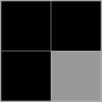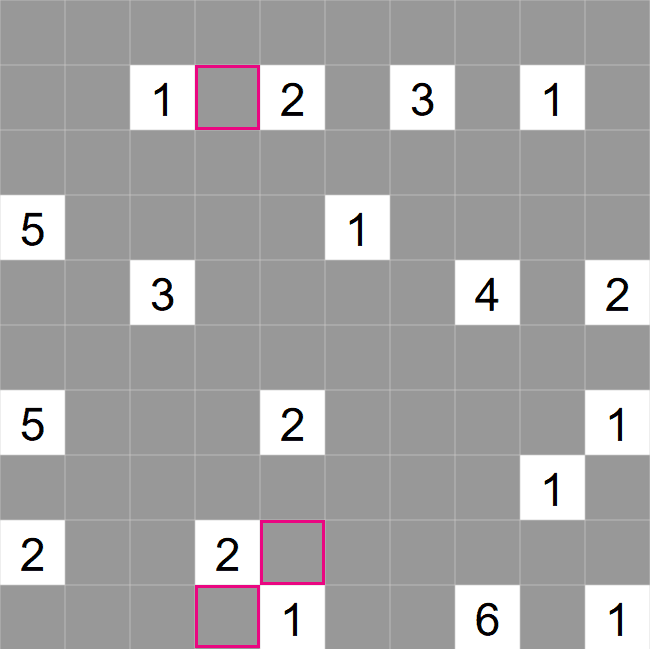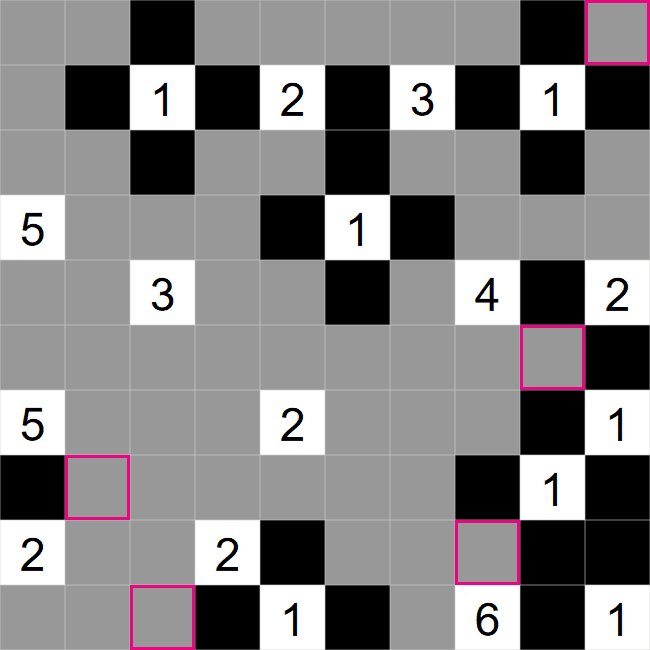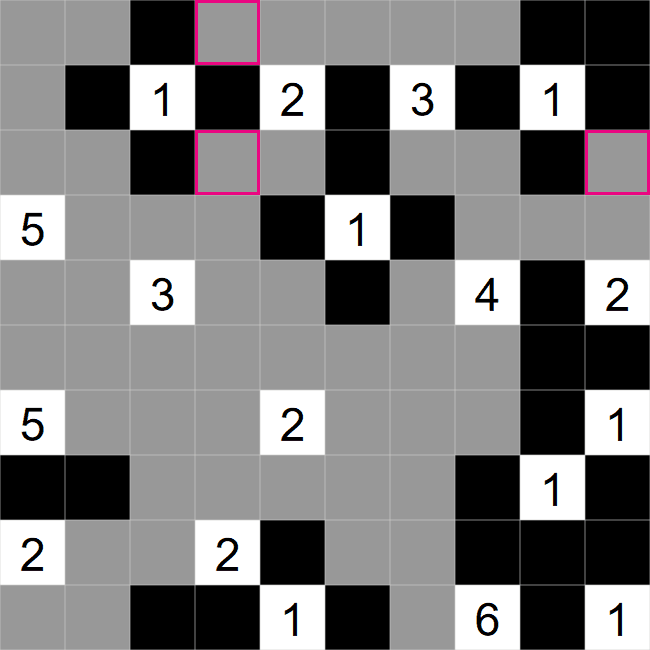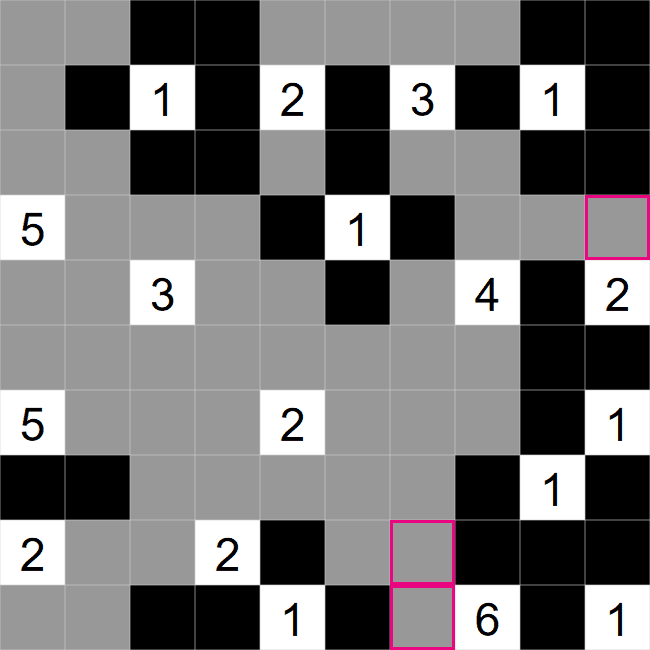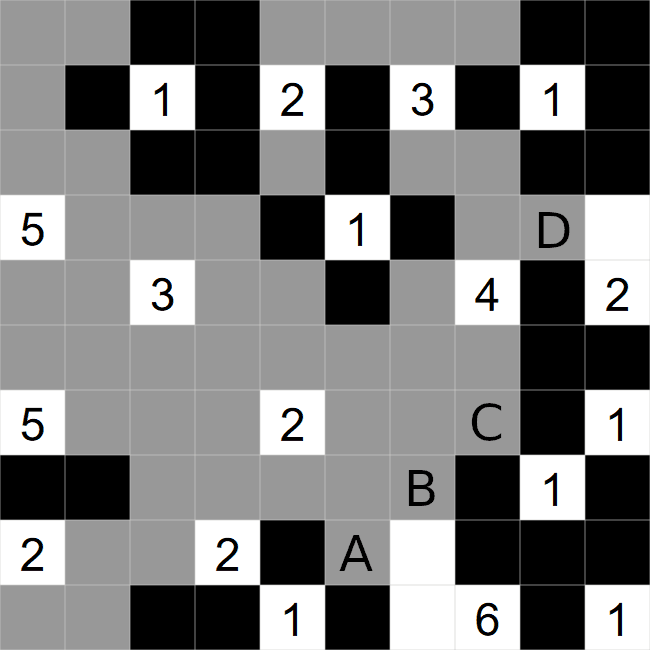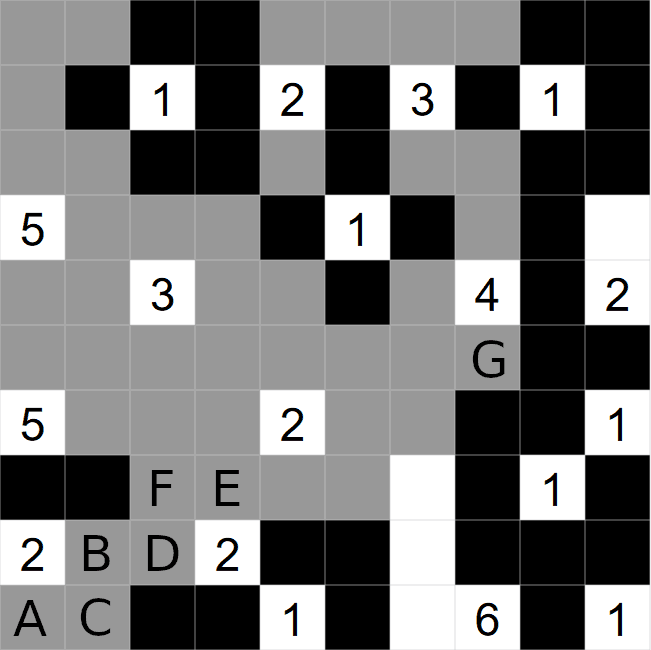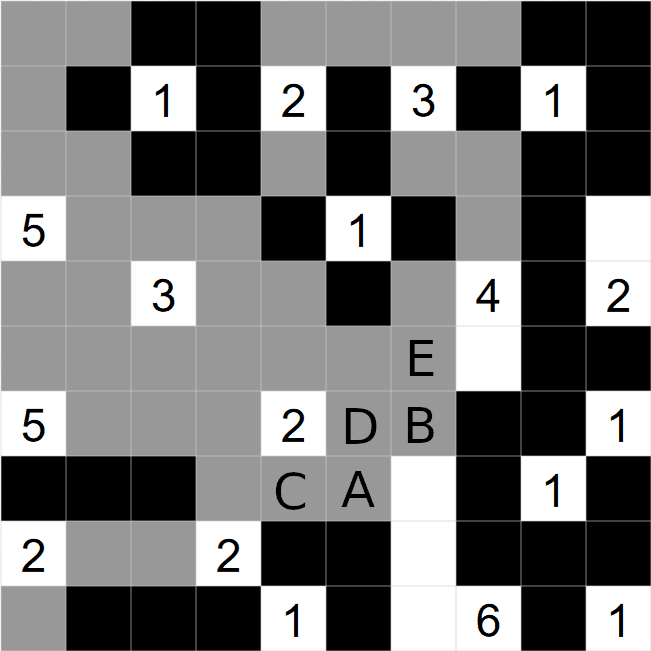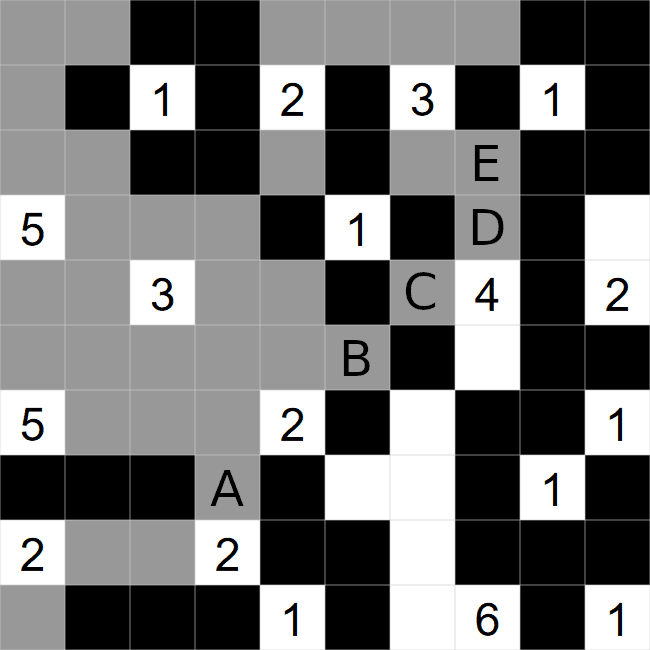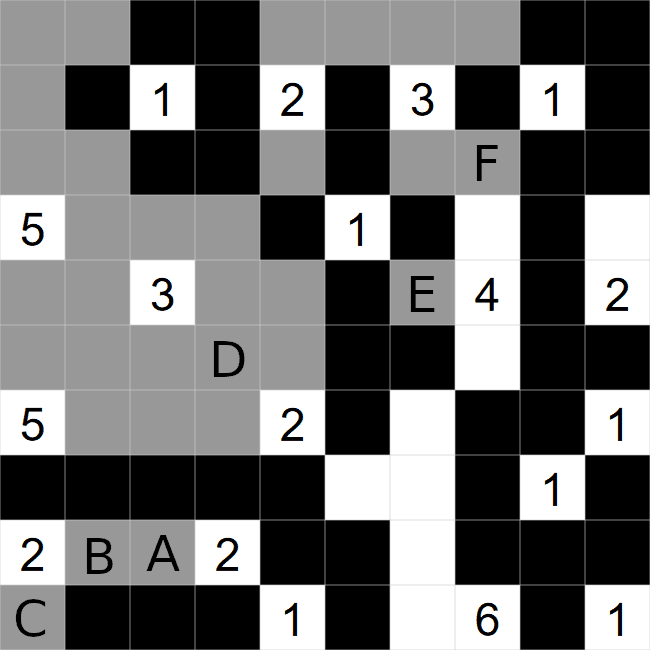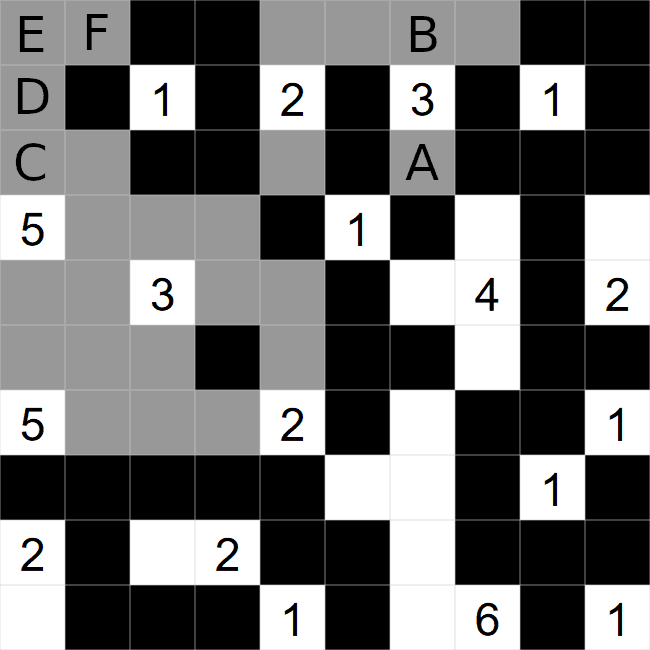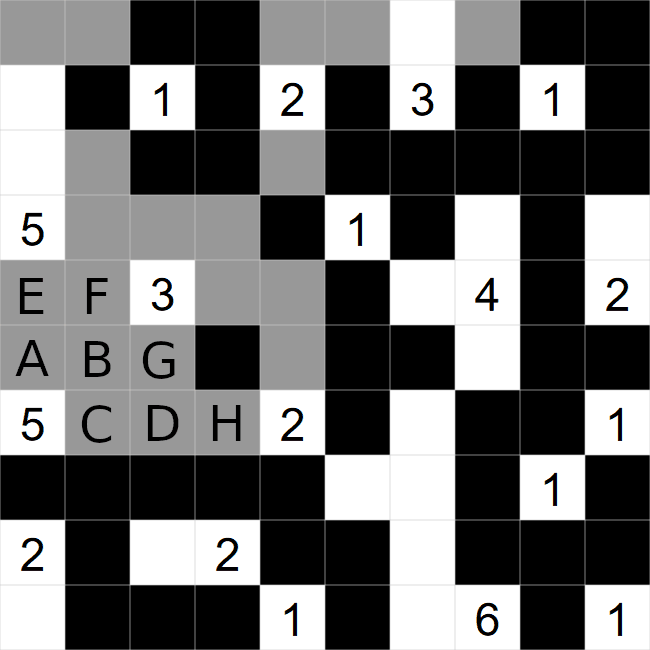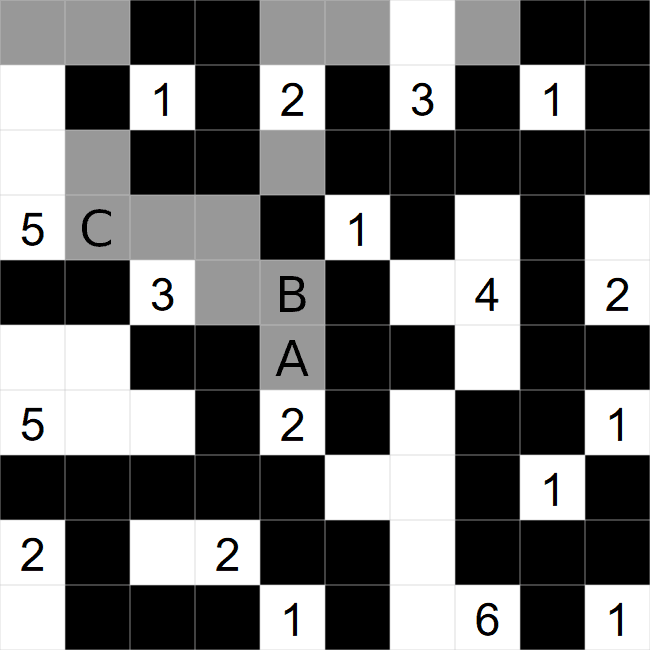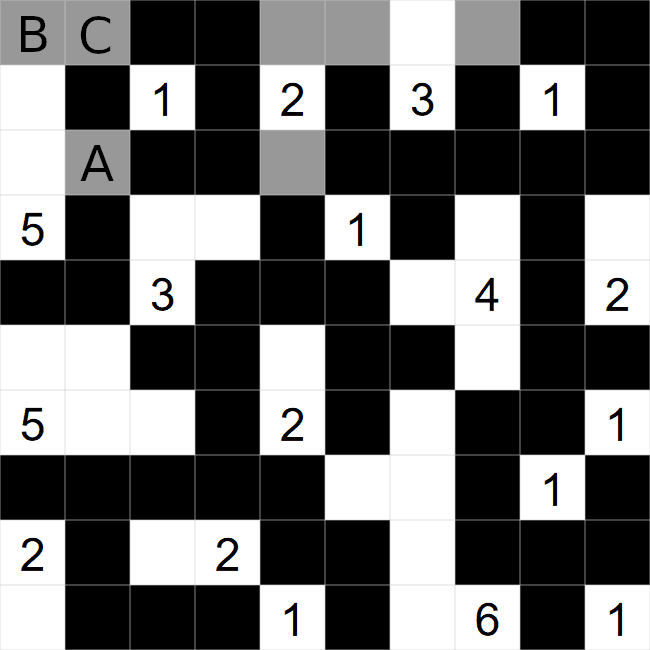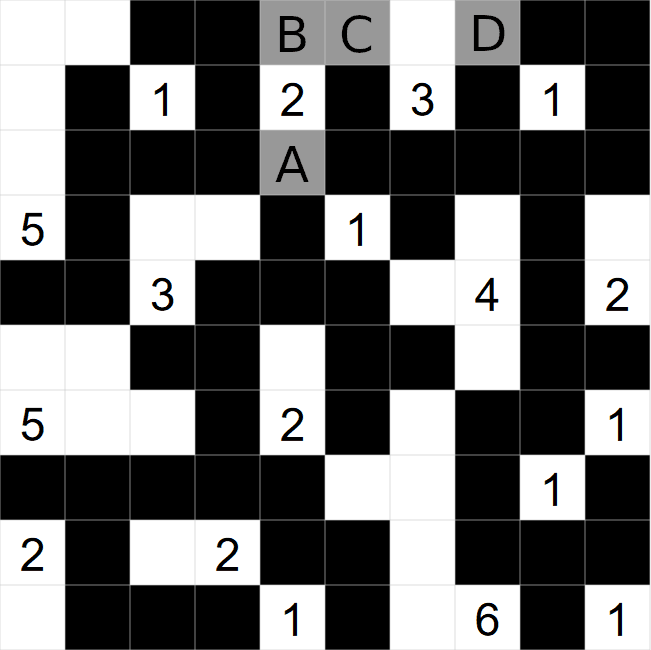This is an example of a starting Nurikabe grid. There are three steps we will always take at the start of
a Nurikabe puzzle,
- We normally have a series of clues containing 1 white wall, we can surround those with black
squares immediately.
- We will also have some clues that are separated by just one unknown cell - I've highlighted
one example. We know that we can't have two white walls joined, so these must be black.
- We will sometimes have two clues that are joined diagonally, there is an example in this
starting grid at the bottom. These two cells must be black to stop the two clues being part of the
same island.
 Nurikabe leaderboard
Nurikabe leaderboard
